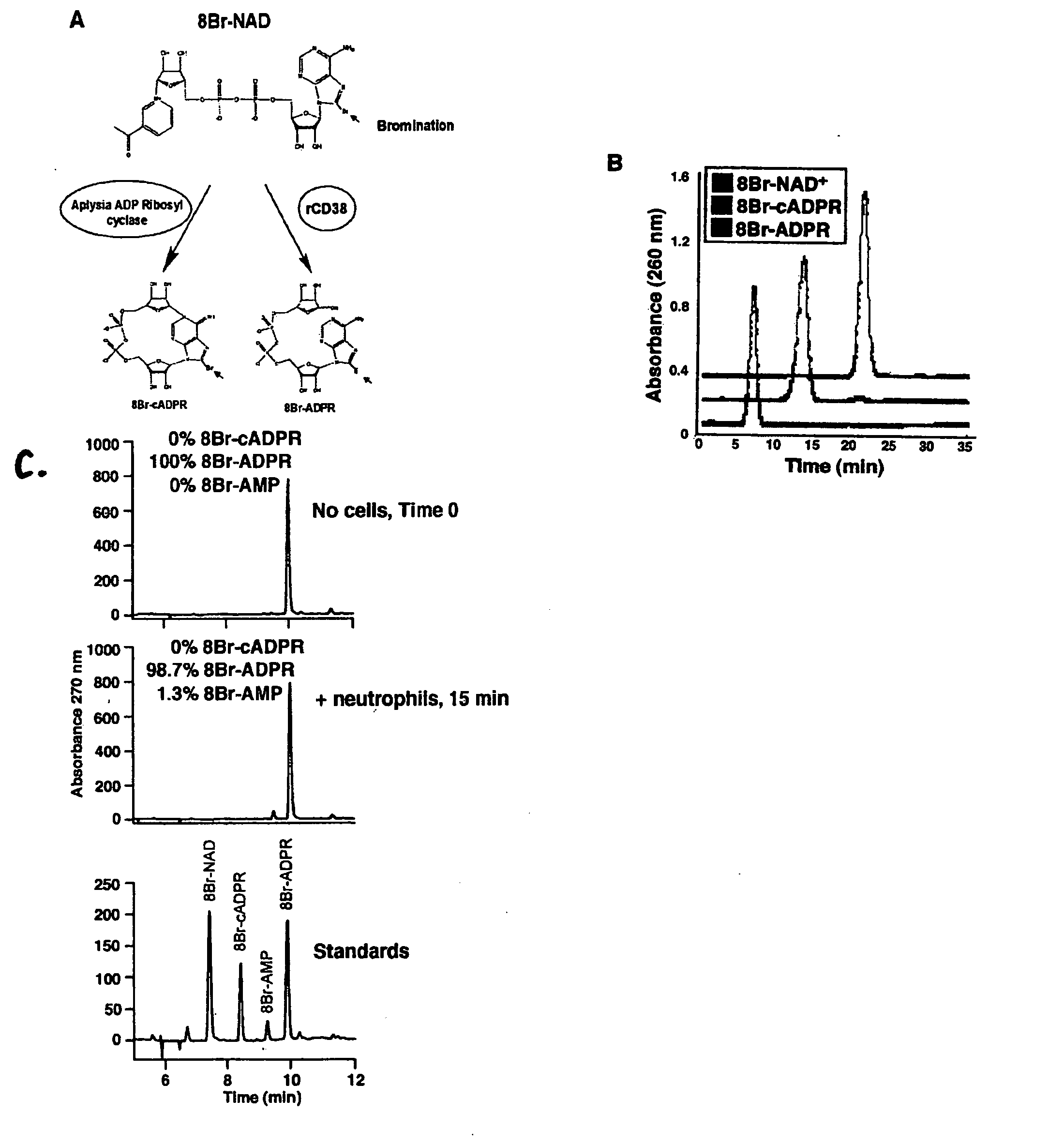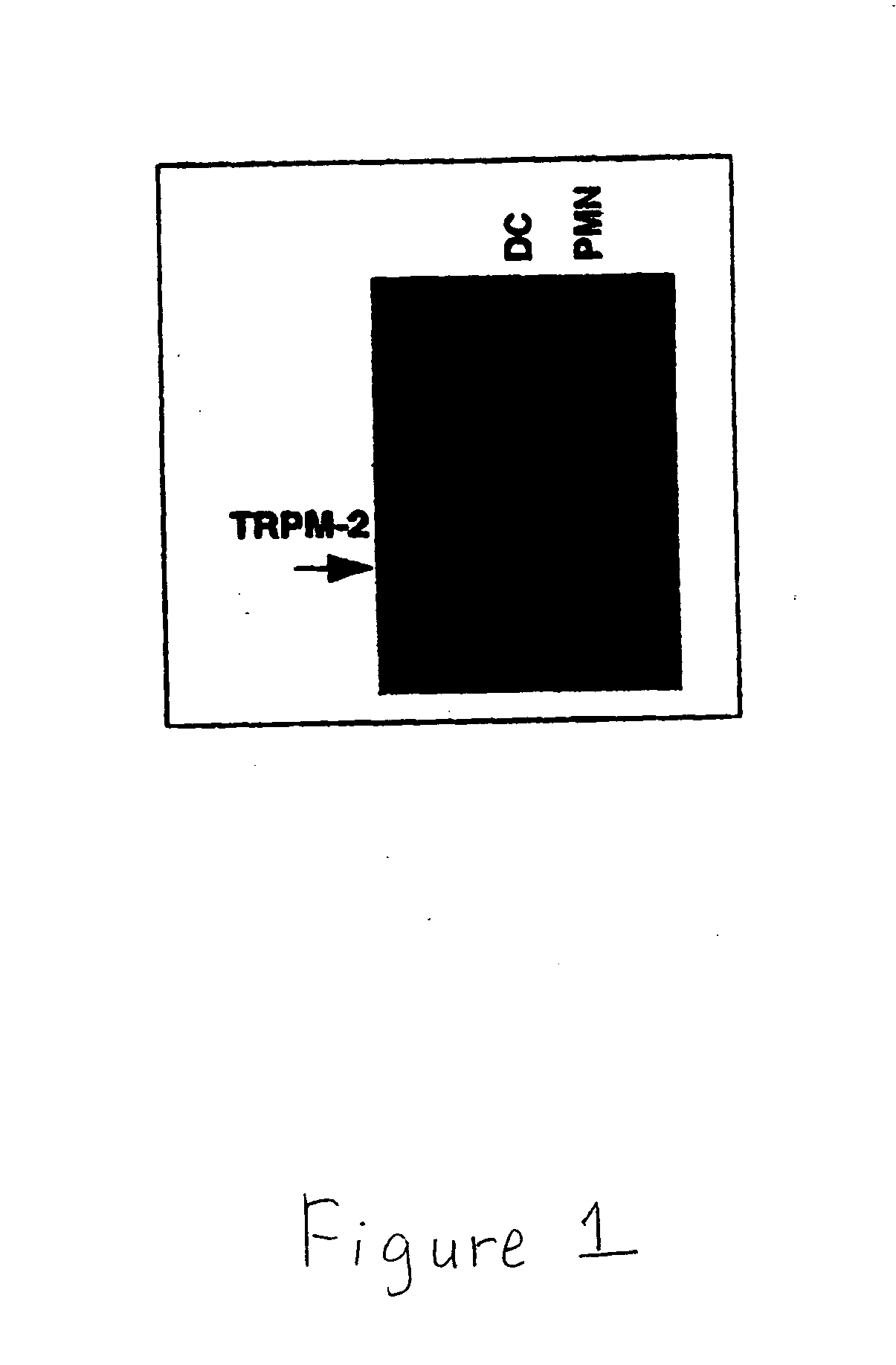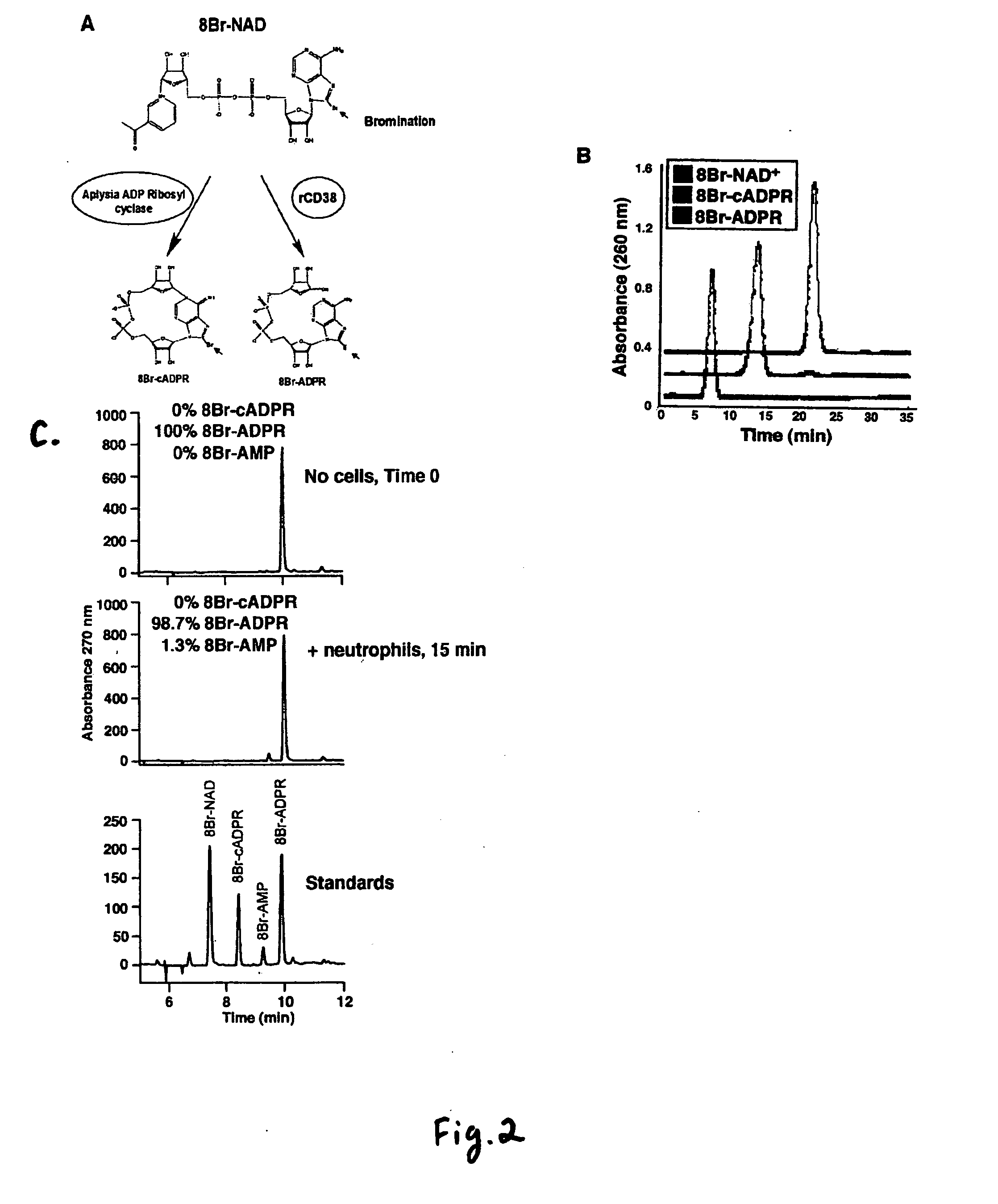TRPM2-specfic inhibitors
- Summary
- Abstract
- Description
- Claims
- Application Information
AI Technical Summary
Benefits of technology
Problems solved by technology
Method used
Image
Examples
Embodiment Construction
[0019]The present invention relates to methods for regulating the ADPR-mediated migratory activity of cells involving the regulation of the ADPR-gated TRPM2 channel. The invention is based on the discovery that a specific inhibitor of TRPM2, 8BR-ADPR, inhibits cell migration. The present invention encompasses screening assays designed for the identification of modulators, such as agonists and antagonists, of TRPM2 channel activity which are also modulators of chemotaxis. The invention further relates to the use of such modulators in the treatment of disorders based on the ADPR-controlled migratory activity of cells to chemoattractants and inflammatory products. Such disorders include, but are not limited to, inflammation, ischemia, autoimmune disease, asthma, diabetes, arthritis, allergies, infections and organ transplant rejection.
5.1. Screening Assays
[0020]In accordance with the invention, a cell based assay system can be used to screen for compounds that modulate the activity of ...
PUM
| Property | Measurement | Unit |
|---|---|---|
| Level | aaaaa | aaaaa |
| Membrane potential | aaaaa | aaaaa |
Abstract
Description
Claims
Application Information
 Login to View More
Login to View More - R&D
- Intellectual Property
- Life Sciences
- Materials
- Tech Scout
- Unparalleled Data Quality
- Higher Quality Content
- 60% Fewer Hallucinations
Browse by: Latest US Patents, China's latest patents, Technical Efficacy Thesaurus, Application Domain, Technology Topic, Popular Technical Reports.
© 2025 PatSnap. All rights reserved.Legal|Privacy policy|Modern Slavery Act Transparency Statement|Sitemap|About US| Contact US: help@patsnap.com



